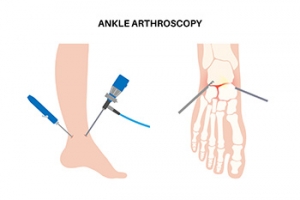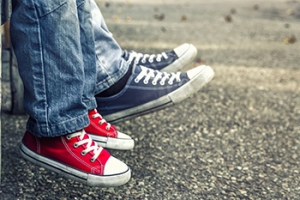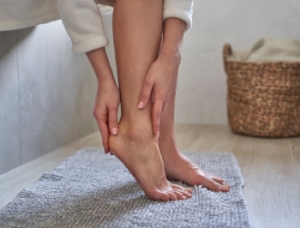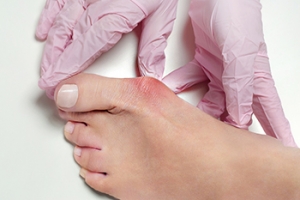Connect With Us

Recovering From Ankle Arthroscopy
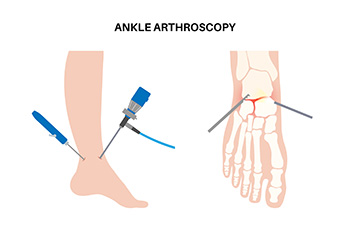
Ankle arthroscopy is a minimally invasive procedure used to diagnose and treat various ankle joint conditions, such as cartilage damage or ankle impingement. Small incisions allow an arthroscope to visualize the joint and perform repairs, reducing recovery time compared to traditional surgery. Recovery from ankle arthroscopy typically involves some rest to minimize swelling. Patients may resume driving within a few weeks and return to work or sports within four to eight weeks, depending on individual progress and the nature of activities. For personalized guidance on post-operative care and to ensure optimal recovery, consulting a podiatrist is a wise idea. This type of doctor provides specialized expertise in foot and ankle health, ensuring thorough rehabilitation and long-term joint function. It is suggested that you schedule an appointment with a podiatrist for tailored advice and support throughout your ankle arthroscopy recovery journey.
Ankle pain can have many different causes and the pain may potentially be serious. If you have ankle pain, consult with one of our podiatrists from Boca Raton Podiatry . Our doctors will assess your condition and provide you with quality foot and ankle treatment.
Ankle pain is any condition that causes pain in the ankle. Due to the fact that the ankle consists of tendons, muscles, bones, and ligaments, ankle pain can come from a number of different conditions.
Causes
The most common causes of ankle pain include:
- Types of arthritis (rheumatoid, osteoarthritis, and gout)
- Ankle sprains
- Broken ankles
- Achilles tendinitis
- Achilles tendon rupture
- Stress fractures
- Tarsal tunnel syndrome
- Plantar fasciitis
Symptoms
Symptoms of ankle injury vary based upon the condition. Pain may include general pain and discomfort, swelling, aching, redness, bruising, burning or stabbing sensations, and/or loss of sensation.
Diagnosis
Due to the wide variety of potential causes of ankle pain, podiatrists will utilize a number of different methods to properly diagnose ankle pain. This can include asking for personal and family medical histories and of any recent injuries. Further diagnosis may include sensation tests, a physical examination, and potentially x-rays or other imaging tests.
Treatment
Just as the range of causes varies widely, so do treatments. Some more common treatments are rest, ice packs, keeping pressure off the foot, orthotics and braces, medication for inflammation and pain, and surgery.
If you have any questions, please feel free to contact our office located in Boca Raton, FL . We offer the newest diagnostic and treatment technologies for all your foot care needs.
Ankle Pain
Pain experienced in the ankle can be caused by a multitude of conditions. While the most common cause is an ankle sprain, other possible problems can include arthritis, gout, ankle instability, an ankle fracture, nerve compression, or tendinitis. In more serious cases, ankle pain can be a sign of improper alignment of the foot or an infection.
Ankle pain can often be accompanied by symptoms such as redness, swelling, stiffness, and warmth in the affected area. Pain can be described differently depending on the condition: short, stabbing pain and a dull ache are some examples. If such symptoms are persistent and do not improve after time, be sure to schedule an appointment with your local podiatrist.
Depending on the condition causing your ankle pain, different treatments may be prescribed by your podiatrist. For ankle sprains, the first step in treatment involves rest, ice, elevation, and compression. Be sure to avoid placing pressure on the ankle, use an ice pack several times a day, and use a compression bandage and elevation to reduce swelling. Other, more serious conditions may require the assistance of certain drugs and medications such as nonsteroidal anti-inflammatory drugs (NSAIDs), physical therapy, or even cortisone injections.
Depending on the severity of your ankle pain and the condition behind it, recovery from ankle pain may take some time.
Consult with your foot and ankle doctor to best determine the cause of your ankle pain and the appropriate treatment.
The Impact of Children's Shoes on Gait
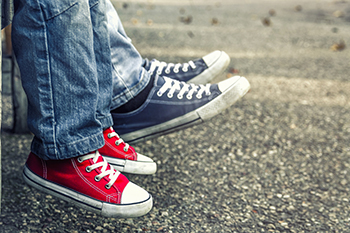 The choice of children's shoes can significantly impact their gait or the way they walk. Improper or unsupportive shoes can lead to issues with foot alignment, discomfort, and even pain during walking. Footwear that is excessively tight or narrow can limit the natural movement of the foot, whereas shoes lacking proper support may not offer the stability required for healthy gait development. Children’s shoes should fit properly, have cushioning, and allow room for growth as a way to promote healthy gait patterns. Small changes in routine, such as replacing shoes as children grow, ensure optimal foot health and development. The wrong shoes can also contribute to issues like flat feet or toe deformities in children, which also can affect their gait. High-quality, comfortable fitted shoes with support can aid in a balanced gait pattern, promoting better posture and reducing the risk of injuries. It is suggested that you visit a podiatrist who can provide guidance on optimal gait development and the long-term foot health of your child.
The choice of children's shoes can significantly impact their gait or the way they walk. Improper or unsupportive shoes can lead to issues with foot alignment, discomfort, and even pain during walking. Footwear that is excessively tight or narrow can limit the natural movement of the foot, whereas shoes lacking proper support may not offer the stability required for healthy gait development. Children’s shoes should fit properly, have cushioning, and allow room for growth as a way to promote healthy gait patterns. Small changes in routine, such as replacing shoes as children grow, ensure optimal foot health and development. The wrong shoes can also contribute to issues like flat feet or toe deformities in children, which also can affect their gait. High-quality, comfortable fitted shoes with support can aid in a balanced gait pattern, promoting better posture and reducing the risk of injuries. It is suggested that you visit a podiatrist who can provide guidance on optimal gait development and the long-term foot health of your child.
Making sure that your children maintain good foot health is very important as they grow. If you have any questions, contact one of our podiatrists of Boca Raton Podiatry . Our doctors can provide the care you need to keep you pain-free and on your feet.
Keeping Children's Feet Healthy
Having healthy feet during childhood can help prevent medical problems later in life, namely in the back and legs. As children grow, their feet require different types of care. Here are some things to consider...
Although babies do not walk yet, it is still very important to take care of their feet.
Avoid putting tight shoes or socks on his or her feet.
Allow the baby to stretch and kick his or her feet to feel comfortable.
As a toddler, kids are now on the move and begin to develop differently. At this age, toddlers are getting a feel for walking, so don’t be alarmed if your toddler is unsteady or ‘walks funny’.
As your child gets older, it is important to teach them how to take care of their feet.
Show them proper hygiene to prevent infections such as fungus.
Be watchful for any pain or injury.
Have all injuries checked by a doctor as soon as possible.
Comfortable, protective shoes should always be worn, especially at play.
If you have any questions please feel free to contact our office located in Boca Raton, FL . We offer the newest diagnostic and treatment technologies for all your foot and ankle needs.
What to Do to Keep Your Child’s Feet Healthy
Being a parent involves caring for your child in every way you can. You make sure they are eating the right food, being nice to others, and staying out of any trouble. However, it is also important that you are watchful of their health, more specifically their foot health. Maintaining good foot health in childhood is important in preventing later conditions in life from happening. As children continue to develop, their feet require different techniques of care. Here are some various ways in which you can help your child’s feet stay healthy.
A baby needs a lot of care and attention overall, but the importance of their feet should never be forgotten. Before a baby turns one, their feet change and develop greatly. It is important that during this time, a mother avoids putting tight socks on their child. She should also encourage movement of their feet so the baby can begin to feel more comfortable using them.
As a baby enters the toddler years of his or her life, they are begin to walk around. When your baby begins to take those first steps, it is crucial that they are wearing protective shoes on their feet. As a mother that is observant of your child’s feet, you may notice changes in them. This is completely normal as the feet are becoming susceptible to the activity of walking. It is normal for a toddler to be a bit unsteady or to “walk funny” at first.
When your child grows out of their toddler years, it is important that you begin to show him or her how to care for their feet on their own. Practice with your child proper hygiene in order to prevent foot fungus or infection. Since children are constantly on the move, it is crucial to be cautious of any accidents or injuries that might occur. If an injury occurs, it is advised that you take your child to be examined by a doctor immediately. Since your child is still growing, particular injuries can shift the way in which a bone or other important part of the foot is developing.
Babies and kids are always changing and growing. Your job as a parent is to make sure they stay healthy and making sure they are properly maintained. This involves proper foot care and making sure the feet stay healthy. Following this guide, your child can live a long and happy life.
Taking Care of Our Feet
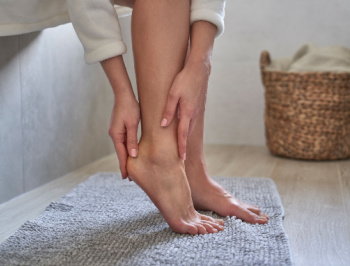 Everyday foot care is essential for maintaining overall health and mobility. Often overlooked, our feet are complex structures that endure significant wear and tear daily. Proper foot care involves several steps to protect and maintain their health. Start with daily washing and thorough drying to prevent infections. Moisturize to keep skin supple, but avoid the spaces between toes to reduce fungal growth. Regularly inspect your feet for cuts, blisters, and signs of infection, as these can indicate underlying health issues like diabetes. Trim toenails straight across and file the edges to prevent ingrown nails. Wearing well-fitting shoes that provide adequate support and cushioning is imperative. Shoes should have enough room for toes to move comfortably, and high heels or tight footwear should be avoided to prevent deformities and pain. Paying attention to foot problems and addressing them early can prevent complications. If you have persistent foot issues needing specialized care, it is suggested that you schedule an appointment with a podiatrist.
Everyday foot care is essential for maintaining overall health and mobility. Often overlooked, our feet are complex structures that endure significant wear and tear daily. Proper foot care involves several steps to protect and maintain their health. Start with daily washing and thorough drying to prevent infections. Moisturize to keep skin supple, but avoid the spaces between toes to reduce fungal growth. Regularly inspect your feet for cuts, blisters, and signs of infection, as these can indicate underlying health issues like diabetes. Trim toenails straight across and file the edges to prevent ingrown nails. Wearing well-fitting shoes that provide adequate support and cushioning is imperative. Shoes should have enough room for toes to move comfortably, and high heels or tight footwear should be avoided to prevent deformities and pain. Paying attention to foot problems and addressing them early can prevent complications. If you have persistent foot issues needing specialized care, it is suggested that you schedule an appointment with a podiatrist.
Everyday foot care is very important to prevent infection and other foot ailments. If you need your feet checked, contact one of our podiatrists from Boca Raton Podiatry . Our doctors can provide the care you need to keep you pain-free and on your feet.
Everyday Foot Care
Often, people take care of their bodies, face and hair more so than they do for their feet. But the feet are a very important aspect of our bodies, and one that we should pay more attention to. Without our feet, we would not be able to perform most daily tasks.
It is best to check your feet regularly to make sure there are no new bruises or cuts that you may not have noticed before. For dry feet, moisturizer can easily be a remedy and can be applied as often as necessary to the affected areas. Wearing shoes that fit well can also help you maintain good foot health, as well as making it easier to walk and do daily activities without the stress or pain of ill-fitting shoes, high heels, or even flip flops. Wearing clean socks with closed shoes is important to ensure that sweat and bacteria do not accumulate within the shoe. Clean socks help to prevent Athlete’s foot, fungi problems, bad odors, and can absorb sweat.
If you have any questions please feel free to contact our office located in Boca Raton, FL . We offer the newest diagnostic and treatment technologies for all your foot and ankle needs.
Everyday Foot Care
Our feet are arguably one of the most important parts of the body. When it comes to health and beauty routines, the feet and toenails are usually ignored. You should always practice proper footcare to avoid any fungal infections or ailments that can not only ruin the appearance of your feet, but also cause pain. Ignoring any foot problems could potentially lead to an expensive doctor’s visit.
The most important step in proper foot care is to wash your feet daily. You should wash them with soap and water. Doing this will cleanse your feet of dirt, sweat and bacteria. It is crucial that you clean between the toes and pat your feet dry with a towel afterward. Your toenails are also an important part of the feet and you may find that they get dirtier in the summer when you wear sandals. It is important that you practice proper toenail care in addition to cleaning the rest of your feet. When trimming your nails, you should always trim straight across instead of in a rounded shape. Trimming in a curved shape may lead to ingrown toenails.
Moisturization is also important for foot care, and you should be moisturizing your feet every day. The best way to prevent dry feet is to rub lotion or petroleum jelly on your clean feet at night and put socks over them. In the morning, your feet should be soft and moisturized.
Another crucial step in proper foot care is to wear the right shoes for whichever activity you are going to partake in. In warmer weather, you should wear shoes that allow your feet to breathe. It is best to avoid shoes such as flip-fops that do not provide arch support. Tight shoes may also be harmful, and they may even cause you to develop bunions.
If you plan on taking a shower in a public area, you should be especially careful, so you do not pick up any fungi. Showers are prone to harboring different types of bacteria and fungi. You should always wear shower shoes or flip flops when walking around in locker rooms and public showers. Avoid sharing shoes with other people because this is another way that fungus may be spread.
If you are experiencing any problems with your feet you should speak with your podiatrist to determine the best method of treatment for you.
All About Bunion Surgery
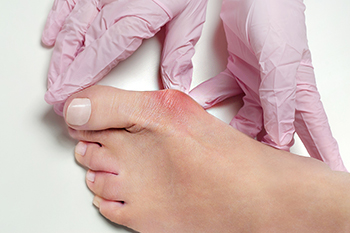
Surgery is often the only effective treatment for severe cases of bunions, where conservative measures like wearing well-fitting shoes and splints prove insufficient. Bunions can cause significant pain and foot deformity, making walking difficult. The primary goals of bunion surgery are to alleviate pain, enhance foot stability, and restore normal walking function. The surgical process involves repositioning the bones, tendons, and ligaments of the big toe, and stabilizing the foot using metal plates, screws, or wires. Post-surgery, the foot must remain stable with bandages or splints, and a special shoe is often worn to relieve pressure. Initial recovery requires limited walking and elevation to reduce swelling, with gradual weight-bearing as healing progresses. Complete recovery from bunion surgery generally takes four to six weeks, although swelling may continue for up to a year. The decision to undergo surgery depends on the severity of symptoms, degree of bone misalignment, the presence of related conditions like osteoarthritis, and overall health. If you are experiencing pain from a bunion, it is suggested that you schedule an appointment with a podiatrist to see if surgery is right for you.
If you are suffering from bunion pain, contact one of our podiatrists of Boca Raton Podiatry . Our doctors can provide the care you need to keep you pain-free and on your feet.
What Is a Bunion?
Bunions are painful bony bumps that usually develop on the inside of the foot at the joint of the big toe. As the deformity increases over time, it may become painful to walk and wear shoes. Women are more likely to exacerbate existing bunions since they often wear tight, narrow shoes that shift their toes together. Bunion pain can be relieved by wearing wider shoes with enough room for the toes.
Causes
- Genetics – some people inherit feet that are more prone to bunion development
- Inflammatory Conditions - rheumatoid arthritis and polio may cause bunion development
Symptoms
- Redness and inflammation
- Pain and tenderness
- Callus or corns on the bump
- Restricted motion in the big toe
In order to diagnose your bunion, your podiatrist may ask about your medical history, symptoms, and general health. Your doctor might also order an x-ray to take a closer look at your feet. Nonsurgical treatment options include orthotics, padding, icing, changes in footwear, and medication. If nonsurgical treatments don’t alleviate your bunion pain, surgery may be necessary.
If you have any questions, please feel free to contact our office located in Boca Raton, FL . We offer the newest diagnostic and treatment technologies for all your foot care needs.
Bunions
A bunion is a bump that forms at the base of the big toe. Bunions form when the big toe pushes against the next toe, which forces the big toe joint to get bigger and stick out. As a result, the skin over the bunion may start to appear red and it may feel sore.
There are risk factors that can increase your chances of developing bunions. People who wear high heels or ill-fitting shoes are more likely to develop them, in addition to those who have a genetic history of bunions or have rheumatoid arthritis.
The most obvious way to tell if you have a bunion is to look for the big toe pushing up against the toe next to it. Bunions produce a large protrusion at the base of the big toe and may or may not cause pain. Other symptoms are redness, swelling, and restricted movement of the big toe if you have arthritis.
Nonsurgical methods are frequently used to treat bunions that aren’t severe. Some methods of nonsurgical treatment are orthotics, icing and resting the foot, taping the foot, and pain medication. Surgery is usually only required in extreme cases. However, if surgery is needed, some procedures may involve removing the swollen tissue from around the big toe joint, straightening the big toe by removing part of the bone, or joining the bones of your affected joint permanently.
Your podiatrist will diagnose your bunion by doing a thorough examination of your foot. He or she may also conduct an x-ray to determine the cause of the bunion and its severity.
Preventing Running Injuries
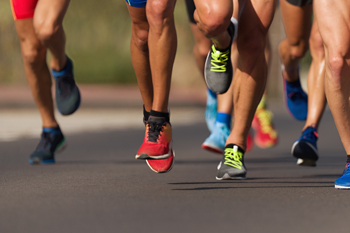 Running is often considered a contact sport due to the repeated impact of the feet striking the ground. To avoid injuries while running, it is important to follow some key tips. Begin with a proper warm-up to prepare your muscles and joints for the activity ahead. Running at an easy pace most of the time allows your body to adapt to the stresses of running, reducing the risk of overuse injuries. Gradually increasing your running intensity and distance helps to build endurance and strength safely. Incorporate strength training exercises to enhance muscle stability and support your joints. Pay attention to your running form, maintaining an upright posture and a mid-foot strike to distribute impact forces evenly. Wearing appropriate, well-fitted running shoes is essential to provide the necessary support and cushioning. Lastly, listen to your body, and rest if you feel pain or discomfort. If you are a runner, to get the most out of your sport, it is suggested that you seek personalized advice and injury prevention strategies from a podiatrist.
Running is often considered a contact sport due to the repeated impact of the feet striking the ground. To avoid injuries while running, it is important to follow some key tips. Begin with a proper warm-up to prepare your muscles and joints for the activity ahead. Running at an easy pace most of the time allows your body to adapt to the stresses of running, reducing the risk of overuse injuries. Gradually increasing your running intensity and distance helps to build endurance and strength safely. Incorporate strength training exercises to enhance muscle stability and support your joints. Pay attention to your running form, maintaining an upright posture and a mid-foot strike to distribute impact forces evenly. Wearing appropriate, well-fitted running shoes is essential to provide the necessary support and cushioning. Lastly, listen to your body, and rest if you feel pain or discomfort. If you are a runner, to get the most out of your sport, it is suggested that you seek personalized advice and injury prevention strategies from a podiatrist.
All runners should take extra precaution when trying to avoid injury. If you have any concerns about your feet, contact one of our podiatrists of Boca Raton Podiatry . Our doctors will treat your foot and ankle needs.
How to Prevent Running Injuries
There are a lot of mistakes a runner can make prior to a workout that can induce injury. A lot of athletes tend to overstretch before running, instead of saving those workouts for a post-run routine. Deep lunges and hand-to-toe hamstring pulls should be performed after a workout instead of during a warmup. Another common mistake is jumping into an intense routine before your body is physically prepared for it. You should try to ease your way into long-distance running instead of forcing yourself to rush into it.
More Tips for Preventing Injury
- Incorporate Strength Training into Workouts - This will help improve the body’s overall athleticism
- Improve and Maintain Your Flexibility – Stretching everyday will help improve overall performance
- “Warm Up” Before Running and “Cool Down” Afterward – A warm up of 5-10 minutes helps get rid of lactic acid in the muscles and prevents delayed muscle soreness
- Cross-Training is Crucial
- Wear Proper Running Shoes
- Have a Formal Gait Analysis – Poor biomechanics can easily cause injury
If you have any questions, please feel free to contact our office located in Boca Raton, FL . We offer the newest diagnostic and treatment technologies for all your foot care needs.
Preventing Running Injuries
Over half of all runners encounter at least one injury per year. The reason for this is because many runners do not train properly. Injuries are almost inevitable due to the physical stress that running causes. While our bodies are great at adapting to the stress, it can only handle it in small doses. Injuries occur when the stress is applied too quickly for the body to handle, causing something within it to break down. With each step you take, your leg is absorbing two or three times your body’s weight.
Some of the most popular running injuries are shin splints, plantar fasciitis, Achilles tendinitis, and stress fractures. Shin splints cause pain along the inside or outside of the shins, and this pain is usually felt at the beginning of a run. The condition itself is defined as an inflammation of the muscles or tendons located around the shinbone. To treat shin splints, it is advised that you ice the shin area and stretch the calf muscles. To prevent this injury, you should slowly increase the distance you plan on running, instead of jumping into a more strenuous routine.
Achilles tendinitis is another common injury and it feels like pain along the back of the leg, toward the heel. This condition is defined as an inflammation of the Achilles which is the largest tendon in the body. The Achilles is responsible for connecting your calf muscles to the heel bone and it is caused by tight calf muscles. If you want to treat this injury, you should take a break from running to cross train with a low-impact activity.
There are a lot of common mistakes runners make that are causing them to experience injury. One mistake is stretching too much prior to warming up. If you plan to go on a run, you should warm up with a gentle 3-5-minute walk followed by a 5-minute run-walk. Another common mistake is jumping into a routine too quickly. Consequently, you should incorporate cross-training into your routine. If you are looking to get active, you should slowly weave running into an activity you are currently participating in. For example, you can try bike riding for 40 minutes followed by a 10-minute run.
Another way to prevent running injuries is to choose shoes that are appropriate for running. There are certain things you should look for when buying a new pair of running shoes. An important factor in these sneakers is flexibility. Running shoes should be capable of bending and flexing at the forefoot. However, you should not be able to bend the entire shoe in half with ease because this is a sign that the shoe does not have enough structure. Additionally, you should look for the fit of the running shoes you want to purchase. It is best to visit a specialty running shoe store to have your feet properly sized. Choosing shoes that fit properly can prevent many foot ailments.
If you are suffering from any pain from running injuries, you should make an appointment with your podiatrist to discover the underlying cause of your pain. He or she will be able to help treat your condition in the best way possible.
